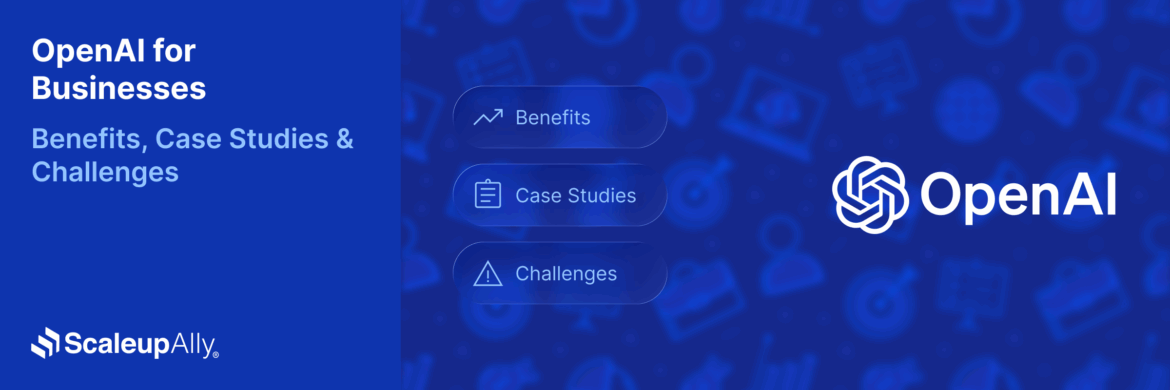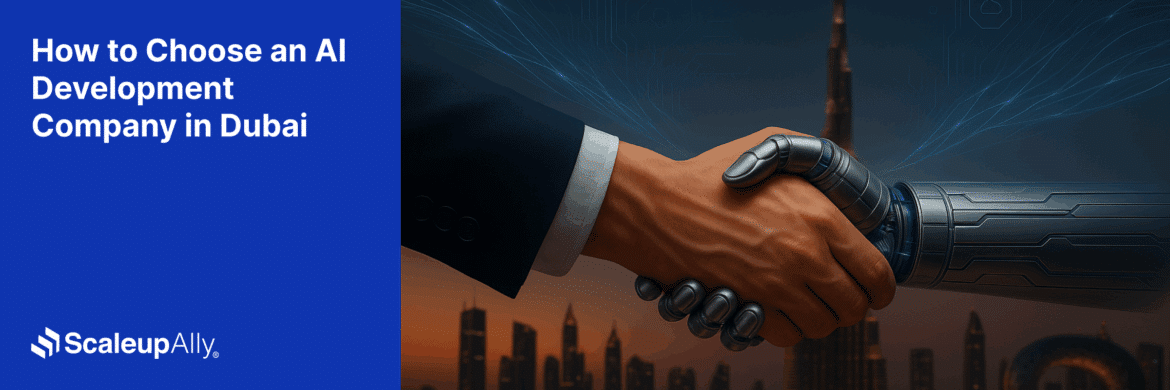
Generative AI in E-Commerce: Latest Use Cases & Examples in 2025
Manu Jain | February 28, 2024 , 12 min read
Table Of Content
Generative AI has transformed how we shop online by offering numerous benefits. It has improved marketing strategies and made operations more efficient. Additionally, it’s bridged the gap between traditional in-store shopping and the online experience, providing customers with valuable benefits.
E-commerce has grown due to its convenience and 24/7 availability. As of 2023, there are over 2.14 billion global online shoppers, and in the US, 70% of the population shops online. However, customers still seek personalized and interactive experiences similar to physical stores.
Despite being a relatively new technology, generative AI has had a significant impact in its decade of existence. As seen in the latest statistics, companies are amazed by its ability to create content seemingly out of nowhere. This article explores the use of generative AI in ecommerce and showcases how companies are leveraging it to maximize their businesses.
Key Takeaways
- Generative AI automates personalized product descriptions and images, enhancing marketing efficiency and customer engagement.
- AI-driven dynamic pricing adjusts in real-time to market trends, boosting sales and maximizing profitability.
- Personalized product recommendations and virtual try-ons provide interactive, tailored shopping experiences, increasing satisfaction.
- Generative AI optimizes inventory management by forecasting demand and maintaining optimal stock levels to reduce costs.
- Leading companies like Stitch Fix and Alibaba leverage generative AI for improved personalization and increased e-commerce sales.### Key Takeaways.
What is Generative AI in E-Commerce?
Generative AI in e-commerce refers to using artificial intelligence to create or generate content, such as product descriptions, reviews, images, and even personalized recommendations. This technology can help businesses automate various aspects of their e-commerce operations, making it easier to manage large inventories, create engaging content, and provide personalized shopping experiences to customers.
For example, generative AI can generate product descriptions based on specifications or reviews, create unique and personalized product recommendations for each customer, or even generate realistic product images for items out of stock.
Overall, generative AI in e-commerce aims to improve efficiency, enhance the shopping experience, and drive sales for online retailers.
Benefits of Generative AI in E-Commerce
Generative AI offers numerous advantages for e-commerce. It helps online stores improve efficiency, make personalized content, and boost sales.
Let’s have a detailed look at how generative AI benefits e-commerce.
1. Improved SEO
AI-generated content can be optimized for search engines, helping e-commerce websites rank higher in search results and attract more organic traffic. Imagine a beauty store using generative AI to create blog posts and product descriptions that include relevant keywords and phrases, improving their visibility on search engines like Google.
Jake Ward’s tweet unveiled that a website surged in just 12 months from no visitors to attracting 750,000 monthly visitors exclusively through organic search, powered by AI-generated content.
2. Cost-Effectiveness
By automating content generation and other tasks, generative AI can help e-commerce businesses reduce labor costs and improve efficiency. Using our furniture store example, the furniture store can use generative AI to create product descriptions and marketing materials, freeing employees to focus on other important tasks and reducing overall operational costs.
3. Inventory Management
AI can analyze trends and customer behavior to predict demand and optimize inventory management, reducing the risk of stockouts and overstocking. For example, a grocery store can use generative AI to analyze sales data and predict which products will be in high demand, ensuring they always have enough stock to meet customer needs.
Use Cases of Generative AI in E-Commerce
When showcasing products online, it’s important to present them in an attractive manner that promises customer satisfaction after purchase. However, this process can often be expensive.
But with the help of generative AI, marketers have access to innovative ways to enhance product presentation, especially for generic products that may get overlooked.
Generative AI can be used in various areas of e-commerce to improve the customer experience and operational efficiency.
Here are some examples:
1. Customized Product Designs
Sometimes, customers make specific product requests. However, the final product often fails to meet their expectations because both parties have different ideas about what it should look like. Generative AI can help e-commerce businesses offer customized products to their customers.
For example, a shoe retailer could use generative AI to allow customers to design their own shoes by selecting different colors, patterns, and materials. The AI would then generate a unique design based on the customer’s choices. That way, both parties have a clear understanding of how the final product will look.
2. Automated Product Descriptions
Writing unique and compelling product descriptions for each product can be time-consuming for e-commerce businesses. Sometimes, you can’t get as creative as you’d like. Generative AI can automate this process by generating product descriptions based on product specifications and customer reviews.
For instance, a furniture retailer could use generative AI to create detailed descriptions for each piece of furniture based on its design, materials, and dimensions.
3. Virtual Styling Assistant
Have you ever purchased a dress online only to find that it didn’t fit quite as expected? Despite the stunning design, the thought of being unable to wear it doesn’t sit well with you. Generative AI can act as a virtual styling assistant for fashion e-commerce websites.
For example, a clothing retailer could use generative AI to suggest outfits based on a customer’s preferences, body type, and the latest fashion trends. The AI could even create virtual try-on experiences to help customers visualize how the outfits would look on them.
4. Dynamic Pricing Strategy
Customers will consistently seek the best prices available. Nowadays, various tools can monitor product prices across different platforms. Setting a price slightly higher than expected can result in losing customers. Generative AI can help e-commerce businesses optimize their pricing strategy in real-time.
For instance, an electronics retailer could use generative AI to analyze competitor prices, demand trends, and inventory levels to determine the optimal price for each product. The AI could also adjust prices dynamically based on factors like the time of day or the customer’s browsing history.
Ready to Benefit from AI in E-Commerce?
Unlock insights on automating content, optimising inventory, and enhancing shopping experiences.

Challenges of Generative AI in E-Commerce
While generative AI offers numerous benefits in e-commerce, it also presents several challenges that businesses need to address:
1. Data Privacy and Security
Collecting and analyzing large amounts of customer data raises concerns about privacy and security. Fashion retailers who use generative AI to analyze customer photos for virtual try-ons, must protect the data from unauthorized access.
2. Bias in Recommendations
Generative AI algorithms can inadvertently perpetuate bias in product recommendations. For example, if a beauty retailer’s AI system consistently recommends lighter shades of makeup to customers with lighter skin tones, it may overlook the needs of customers with darker skin tones.
A notable instance occurred when Google restricted the generation of images of people on its AI tool Gemini, following accusations of anti-White bias by some users.
3. Ethical Considerations
Using generative AI raises ethical questions about its impact on society. For instance, if an e-commerce platform uses generative AI to create fake product reviews, it could mislead customers and harm competitors.
4. Cost of Implementation and Maintenance:
Implementing and maintaining generative AI systems can be costly. For example, if a grocery delivery service wants to use generative AI to optimize their delivery routes, they must invest in the necessary infrastructure and ongoing maintenance.
5. Regulatory Compliance
Generative AI systems must comply with regulations regarding data protection and consumer rights. Online marketplaces who use generative AI for pricing optimization must ensure that it does not violate antitrust laws.
Case Study: Generative AI in E-Commerce Examples
Stitch Fix and Alibaba, two major players in their respective industries, use generative AI to transform how they interact with customers and boost sales. Through this advanced technology, they can tailor recommendations, leading to higher customer satisfaction and impressive business expansion.
Let’s look at how Stitch Fix and Alibaba are reshaping e-commerce with generative AI.
Case Study 1: Stitch Fix
Overview: Stitch Fix is an online service that helps people find clothes they’ll love. They use Generative AI to suggest outfits based on each person’s unique style.
How They Use Generative AI: Stitch Fix looks at what customers like to wear, their size, and what they’ve bought before. They use this data to train their AI algorithms to generate personalized clothing recommendations for each customer.
Results: Using this smart technology, Stitch Fix has improved at suggesting outfits that customers like. This makes customers happier and helps Stitch Fix sell more clothes. Plus, it saves them time and money because they don’t have to pick out clothes for each person manually.
Case Study 2: Alibaba
Overview: Alibaba is one of the world’s largest e-commerce companies. They use Generative AI to help people find products they’re interested in.
How They Use Generative AI: Alibaba’s AI algorithm looks at what people search for, what they look at online, and what they buy. This helps Alibaba suggest products that each person might want to buy. They also use this technology to make it easier for people to find what they’re looking for.
Results: Thanks to Generative AI, Alibaba is much better at suggesting products people want. This has helped them sell more products and keep customers coming back. It also saves them time because they don’t have to organize their product listings manually.
Conclusion
To be innovative and stay ahead of the competition, businesses can leverage generative AI to revolutionize how they present and package their products. This allows them to break traditional boundaries, automate their creative processes, and deliver visually appealing content tailored to each customer’s preferences and tastes.
If you’re interested in availing Gen AI services for your e-commerce platform and need some ideas, we at ScaleupAlly are here to help with reliable eCommerce development services & solutions.
As experienced developers, we have ample expertise in creating scalable products that cater to customer requirements. Please get in touch with us to discuss how we can help you build your next project.
Frequently Asked Questions (FAQs)
Q: How can e-commerce businesses integrate generative AI into their operations?
E-commerce businesses can integrate generative AI into their operations by implementing AI-powered chatbots for customer support, using AI for personalized product recommendations, and automating content generation for product descriptions and marketing materials.
Q: How does generative AI improve the customer shopping experience in e-commerce?
Generative AI can improve the customer shopping experience by providing personalized product recommendations, creating engaging and informative product descriptions, and enhancing the visual appeal of product listings through AI-generated images.
Q: How can e-commerce businesses measure the effectiveness of generative AI?
E-commerce businesses can measure the effectiveness of generative AI implementations by tracking metrics such as conversion rates, customer engagement, and user satisfaction levels before and after implementing generative AI solutions.
Similar Articles Around Generative AI
Related Blogs

OpenAI for Businesses [Benefits, Use Cases & Challenges]
Discover the benefits of OpenAI for businesses. From reducing costs to scaling operations and enriching customer experiences. Real-world use cases included.
ScaleupAlly Team
Dec 16 ,
11 min read

Best 11 Agentic AI Tools in UAE: Accelerating Digital Transformation
Discover the top 11 agentic AI tools in UAE for 2025. Explore features, benefits, and tips to choose the right AI tool for your business growth.
Manu Jain
Nov 6 ,
9 min read

How to Choose an AI Development Company in Dubai: A Complete Guide
Find out how to choose the right AI development company in Dubai. Learn key factors, local considerations, and tips to select the best partner.
Manu Jain
Nov 6 ,
9 min read


